INTRODUCTION
A majority of my previous posts on Remote Sensing (as of July 2021) involved processing a single Satellite Imagery dataset and interpreting the output. Occasionally, for workflows involving Change Analysis, I've compared the outputs derived from two varieties of Imagery datasets as well.
In this post, I have utilized 15 Sentinel-1 SAR Satellite Imagery datasets (Radar / Microwave Remote Sensing) acquired between April and December 2020 to detect the presence of Rice Fields (Paddy Farms) in the Mekong River Delta of Vietnam.
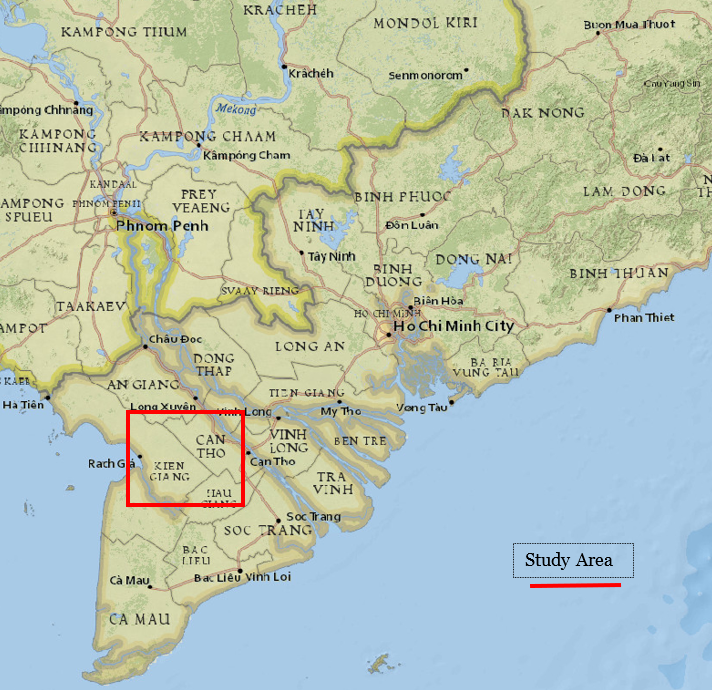
The Mekong River Delta, also known as the 'Rice Bowl', produces more than half of the country's Paddy, Vietnam being the world's 5th largest producer and the 3rd largest exporter of Rice at the time of writing this post (May 2021).
Monitoring Rice production, or any other staple food crop for that matter, is vital. Not only does the cultivation of Paddy employ a significant number of farmers (over 15 million of them in Vietnam itself), but also information on the crop's health and growth is of significant importance to stakeholders across the Supply Chain. Just this year, due to limited supplies in the market, Vietnam was compelled to import Rice from its trading rival - India.
METHODOLOGY
'Why do you need so many Imagery datasets in order to detect Rice?', you may wonder.
Well, consider interpreting this single Optical Imagery dataset depicted in Figure 2 below-
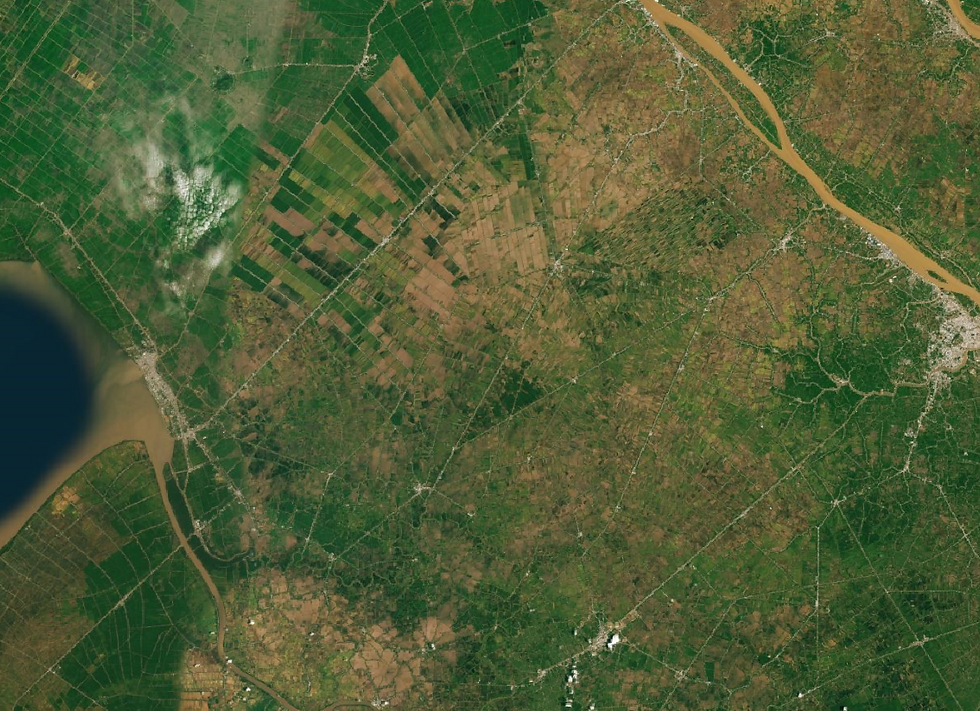
From this natural-color photographic scene, will you be able to state with certainty that the lushly vegetated lands are all Rice fields and the remaining semi-vegetated and barren ones are not?
Of course, not. It is virtually impossible to make that assessment.
What if I were to give you an added piece of information - this imagery was acquired on a day within the Rice harvesting season - would you be able to detect the Rice fields now?
Still not possible. Irrespective of the fact that you may be able to delineate the fields that have already been harvested from the ones that haven't been, you still don't have enough information and knowhow to delineate a Rice field from one that isn't from just a single aerial photograph of the scene.
Imagine another situation - you've come to possess additional information about the harvesting characteristics of Rice crop - the on-ground when and how to harvest knowhow from a Vietnamese farmer. Now, if I were to give you not one, not two, but multiple aerial photographs from different days within the harvesting season, would you be able to detect the Rice Fields?
You'll certainly fare better than your previous attempts, although I am certain that your assessment will still not be very accurate.
You'll realize that there are two aspects that I have attempted to drive at - Firstly, having knowledge about the Crop cycle is useful (particularly for this workflow). Secondly and more importantly, interpreting Optical Imagery - a rendition of the Earth's surface obtained from the reflection of Sunlight - offers only a limited perspective about the surface features on Earth (Rice Fields in our case).
Microwave / Radar Remote Sensing has unique characteristics that overcome some of the major limitations of Optical Remote Sensing. How Microwaves (used in the formation of Radar Imagery - refer this Electromagnetic Spectrum infographic) interact with surface features on Earth is significantly different than how Sunlight does - and this characteristic is of fundamental importance to our Rice Fields Detection endeavour.
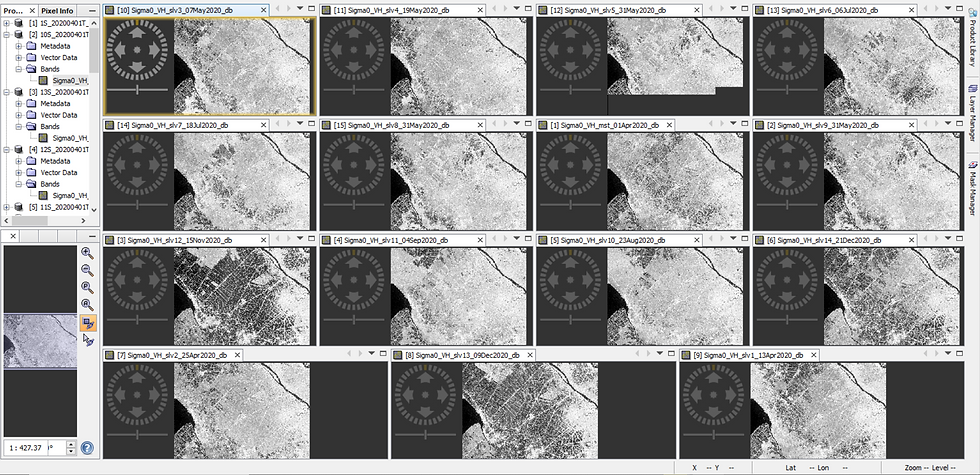

From sowing to harvesting, Rice crop typically takes 4 months to be cultivated, on an average. Rice fields are inundated with standing water up until 14-21 days prior to harvesting, to facilitate crop growth. As a result, only during the later stages of growth does the rice crop emerge from underneath the water and becomes visible to an observer (to a Satellite in our case). It is this unique characteristic that shall help us to distinguish Rice fields from other types of farmlands and land covers.

If Microwaves emitted by Radar Satellites were to hit a flooded Rice field (the Rice crop being in a submerged state), the Backscatter would reflect away from the Satellite, also known as Specular form of reflection. However, if the Microwaves were to hit the canopy / foliage of Rice crops above Water i.e. close to the harvesting time), a significant amount of Backscatter would reflect towards the direction of the Satellite, also known as Diffuse form of reflection. Figure 5 depicts this vital peculiarity.
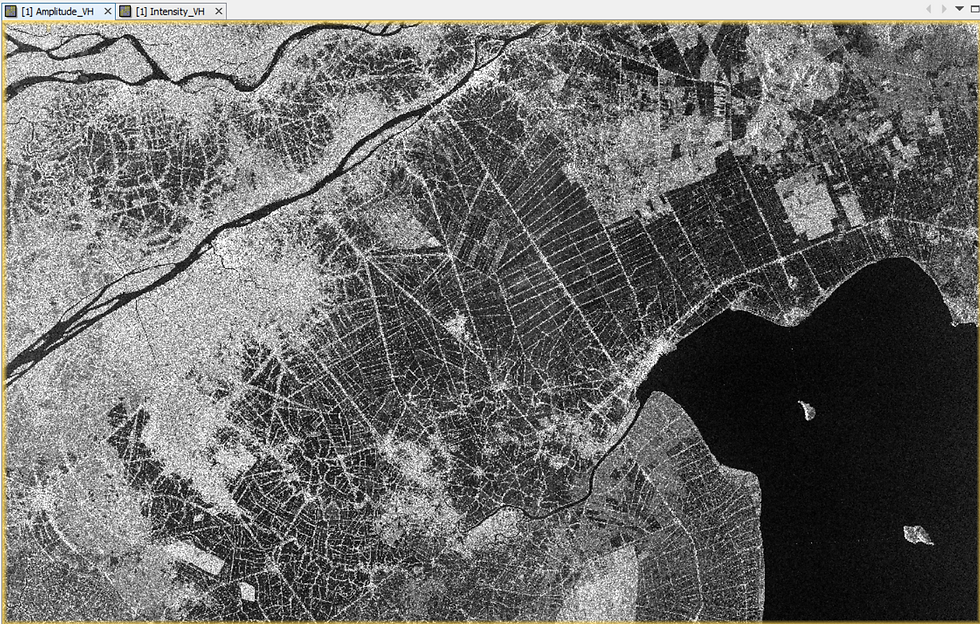
In this depiction (Figure 6) of a raw SAR Satellite Imagery Dataset acquired over Mekong River Delta on 9th December, 2020 - the blackish pixels represent those areas from were low backscatter was received by the Satellite i.e. these areas are likely flooded (notice the East Vietnam sea on the right is completely comprised of black pixels) whereas the whitish pixels represent those areas from where high backscatter was received by the Satellite i.e. these areas are likely to be vegetated and / or are urban areas. With the assistance from Optical Imagery / Google Earth Imagery over the same extent, one can rule out the presence of urban areas - the Mekong Delta is predominantly an agri-zone.
ESA's SNAP Software has been used for Imagery Processing and Visualization purposes

Several processing steps (namely: Apply Orbit File → Thermal Noise Removal → Calibration → Terrain Correction → Geographic Extent Subset → Band Subset → Stack Generation → Multi-temporal Speckle Filtering → Decibel Transformation; technicalities elaborated in this document from Page 14 onwards), need to be performed in order to transform the raw Radar Imagery dataset into output that can be useful for analysis and interpretation. Do observe from the processed Imagery output depicted in Figure 7 above that a) there is an enhanced color range in the image - from brighter white to darker black pixels (from applying Decibel Transformation to the Backscatter readings), b) the Imagery's geographic extent has been clipped to the Mekong River Delta and c) the Imagery has been transformed to a Map Projection i.e. how the terrain would appear on a geographic map (originally it was depicted in Radar Geometry i.e. as captured by the Signal Receiver on the Satellite).
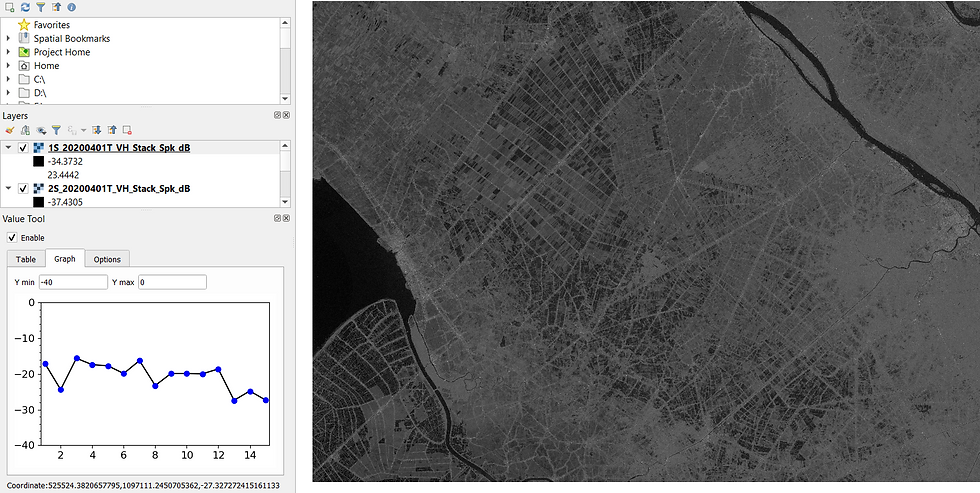
Because I have Batch-processed the output into a single Stack i.e. all the fifteen processed Radar Imagery Datasets from different timelines have been clubbed into an individual Imagery product, I am now in a position to prepare a 'Backscatter Evolution Profile' - a graphical representation to observe how the Backscatter values for a particular pixel in the Imagery has evolved through the timeline of the 15 datasets. From Figure 8 above, notice that there are three distinctive Troughs in the Graph i.e. low Backscatter readings - corresponding to the 2nd, 8th and 13th Imagery in the Stacked product (these images have been acquired on 13th April, 18th July and 15th November 2020 respectively). The Troughs are also followed by periods of increasing Backscatter.
What could this imply for our study?
In Vietnam, Rice is sown three times a year - typically in spring, autumn and winter. Hence, these would be the times when the Backscatter readings are at at its lowest. As the crop grows, the Backscatter values would gradually increase as is indicated in the Backscatter Evolution Graph. Thus, one would be in a position to reasonably establish that the Land depicted by the selected pixel is being used to cultivate Rice i.e. is a Rice Field.
Other Agricultural Fields not used for Rice Cultivation and other types of Land Covers (Barren, Urban etc.) would not have the same Backscatter Evolution Profile as that of a Rice Field. For example, the Backscatter readings over a Residential neighborhood would have minimal variation as the surface feature (buildings and houses) would remain consistent throughout the timeline of the acquired Imagery Datasets. If a Farmland is not used to cultivate Rice, then again, the variation in backscatter would be tiny as the crop will not have the same submerged-to-visible Growth Cycle as that of Rice. Thus in general, (pay close attention to what I am indicating here), the pixels that have the highest variations in Backscatter readings are likely to be Rice Fields. This is the unique delineating property that renders Radar Imagery Analytics useful for Rice Detection studies. Of course, Optical Imagery and Ground Truthing (Supervised Observation) can be used to confirm and validate respectively our Radar Imagery Output Assessment.
Finally, I will proceed to apply this delineating characteristic of Rice Fields to the entire Imagery Dataset over the Mekong River Delta in order to create a Map which would highlight the areas that are used to cultivate Rice.
For the single Imagery Stack of processed datasets acquired across 15 points in time, I will ask SNAP software to compute, for each pixel, a) its Maximum Backscatter value, b) its Minimum Backscatter value, and c) use the result from a) and b) to compute the Range (Maximum - Minimum) Backscatter. These three computations will be saved as three individual bands of information in the Imagery Stack and I will use it subsequently to create a False-Color Composite - to visually display the information in a Map-form (as depicted in Figure 9 below).

The Symbology i.e. color profile applied to the Map raster ranges from bright Blue to intense Violet - the former pixels have the lowest variation in Backscatter readings in our 9-month timeline of 15 Radar Imagery datasets whereas the latter pixels have the highest variation in Backscatter readings i.e. are Rice Fields / Paddy Farms.
Hope you enjoyed this study on using Remote Sensing for Rice Field Detection. Which other crops do you think can be detected by Radar Remote Sensing?
ABOUT US
Intelloc Mapping Services | Mapmyops.com is based in Kolkata, India and engages in providing Mapping solutions that can be integrated with Operations Planning, Design and Audit workflows. These include but are not limited to - Drone Services, Subsurface Mapping Services, Location Analytics & App Development, Supply Chain Services, Remote Sensing Services and Wastewater Treatment. The services can be rendered pan-India, some even globally, and will aid an organization to meet its stated objectives especially pertaining to Operational Excellence, Cost Reduction, Sustainability and Growth.
Broadly, our area of expertise can be split into two categories - Geographic Mapping and Operations Mapping. The Infographic below highlights our capabilities.
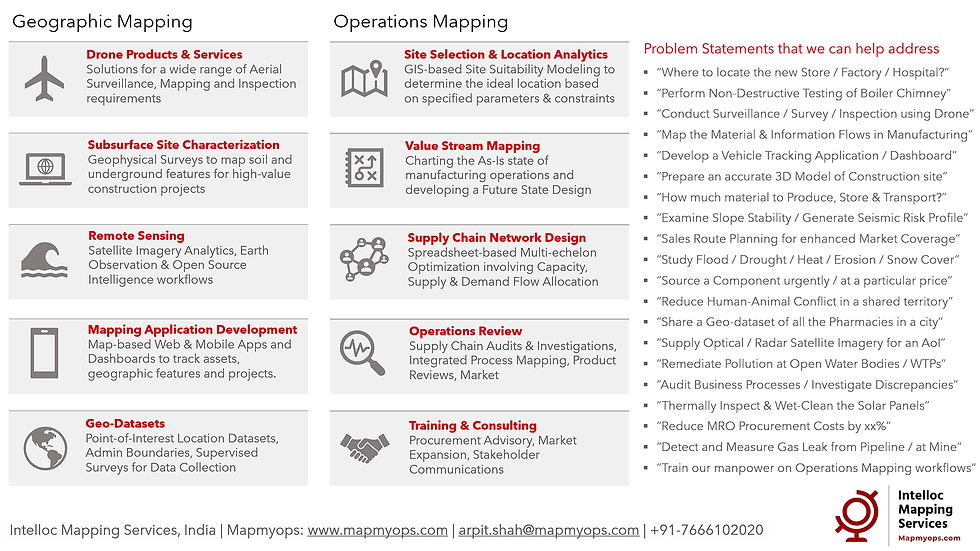
Our 'Mapping for Operations'-themed workflow demonstrations can be accessed from the firm's Website / YouTube Channel and an overview can be obtained from this flyer. Happy to address queries and respond to documented requirements. Custom Demonstration, Training & Trials are facilitated only on a paid-basis. Looking forward to being of service.
Regards,
(Much thanks to RUS Copernicus for supplying the tutorial and resources to conduct this study)

